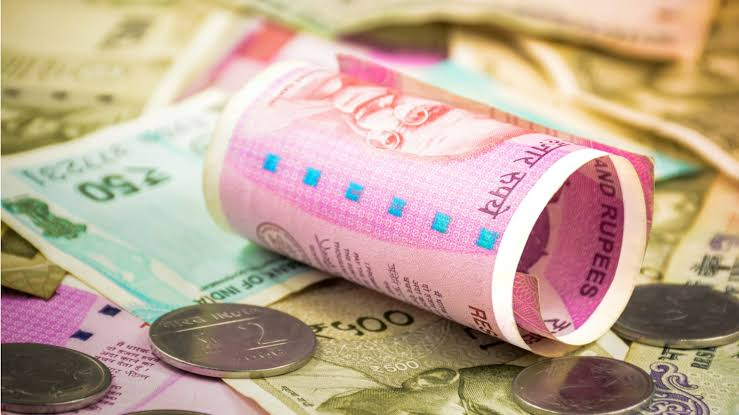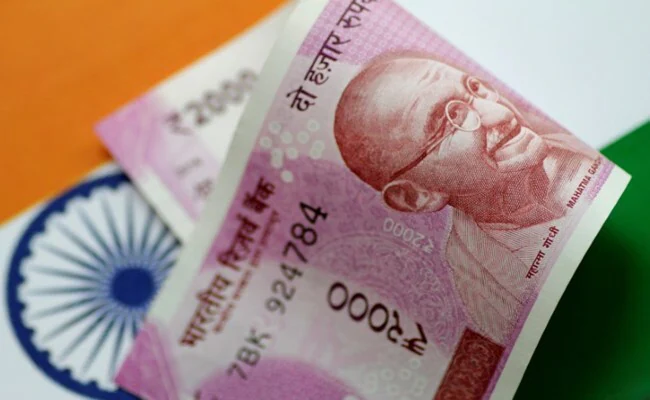On May 19, The Reserve Bank of India said that it had decided to remove the Rs 2 000 denomination banknotes from circulation in light of the foregoing and in accordance with its “Clean Note Policy.”
The Reserve Bank of India (RBI) has recommended the general people to deposit Rs 2,000 banknotes into their accounts or exchange them for notes in different denominations at any bank outlet.
The RBI stated in a release that deposits into bank accounts could be made “in the usual manner, i.e., without restrictions and subject to existing instructions and other applicable statutory provisions.”
The Reserve Bank of India further stated that beginning on May 23, 2023, any bank will be able to exchange Rs 2,000 banknotes into notes of other denominations up to a ceiling of Rs 20,000 at a time in order to maintain operational convenience and prevent hindrance of everyday operations of bank branches.

Img Source: https://moneycontrol.com
The country’s biggest value currency note will be phased out of circulation, the central bank announced on Friday. The 2000-rupee note, which was issued in 2016, will remain legal tender, although people are required to deposit or exchange these currencies until September 30, 2023.
The action is reminiscent of the Narendra Modi-led government’s sudden withdrawal of 86% of the economy’s cash in circulation overnight in 2016. According to experts and economists, the move this time will be less disruptive since a lesser value of notes will be withdrawn over an extended amount of time.
WHAT CAUSED THE GOVERNMENT TO WITHDRAW THE Rs 2,000
When the 2000-rupee notes were released in 2016, the intention was to swiftly refill the Indian economy’s money in circulation following demonetization.
However, the central bank has repeatedly stated that it wishes to limit the number of high-value notes in circulation, and it has ceased producing 2000-rupee notes in the last four years.
The RBI explained in a message announcing the withdrawal of these notes and stated that the denomination isn’t frequently utilised for transactions
WHAT IS THE REASON FOR DOING THIS NOW?
Although the government and the central bank did not indicate why the change was made at this time, reviewers point out that it coincides with state and national elections in the country, when cash usage normally increases.
“Making such an attempt prior to the general elections is a smart decision”, Rupa Rege Nitsure indicated, L&T Finance Holdings’ group chief economist. “Individuals who have been using these notes as a form of value may face difficulties,” she said.
WILL THIS HAVE AN EFFECT ON ECONOMIC GROWTH?
The circulating value of 2000-rupee notes is Rs 3.62 lakh crore ($44.27 bn). This represents around 10.8% of the money in circulation.
“Because smaller-quantity notes are available in sufficient quantities, this withdrawal will not cause significant disruption,” said Nitsure. “The extent of electronic transactions as well as online commerce has also significantly expanded in the past 6-7 years”, he stated.
However, small enterprises and cash-intensive industries like agriculture and construction may have difficulties in the short term, according to Yuvika Singhal, economist at QuantEco Research.
According to Singhal, there might be a surge in discretionary expenditures such as gold if persons holding these notes chose to spend them rather than deposit them in a bank account.
WHAT EFFECT WILL IT HAVE ON BANKS?
Bank deposits will grow since the government has invited citizens to deposit or exchange the notes for lower denominations by September 30. This occurs at a time when bank loan growth is outpacing deposit growth.
According to Karthik Srinivasan, group head of banking and finance sector ratings at rating agency ICRA Ltd, this will relieve pressure on deposit rate rises.
Liquidity in the banking sector will also improve. Because all of the 2000-rupee notes will be returned into banks, there will be less currency in circulation, which will assist improve the liquidity of the banking sector,” explained Madhavi Arora, an economist at Emkay Global Financial Services.
WHAT IMPACT WILL THIS HAVE ON BOND MARKETS?
Improved banking system liquidity and deposit inflows into banks may result in lower market short-term interest rates when these funds are invested in more short-term government securities, according to Srinivasan.

Img Source: https://www.ndtv.com/
Additionally, the RBI has given all banks sufficient time until September 30, 2023, to ensure a smooth completion of exchange or deposit.
The central bank also instructed banks to immediately stop issuing banknotes with a value of Rs 2 000.
Following the removal of the legal tender status of all Rs 500 and Rs 1,000 banknotes circulating during 2016, the RBI swiftly issued Rs 2000 banknotes to address the monetary needs of the economy.
The aim of issuing Rs 2000 banknotes was met once sufficient quantities of notes for different denominations became available. The printing of Rs 2000 banknotes was thus discontinued in 2018–19.
The announcement stated that around 89 percent of the Rs 2000 banknotes were printed before March 2017 and are nearing the end of their predicted lifespan of 4-5 years.
According to the announcement, the total value of these banknotes in circulation has decreased from Rs 6.73 lakh crore, which represented 37.3% of all notes in circulation at their peak on March 31, 2018, to Rs 3.62 lakh crore, which will make up just 10.8% of all notes in circulation on March 31, 2023.















